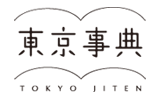Jan Szewczyk and Franciszek Orlowski Report
1)Objectives/areas of interest
Franciszek Orlowski and I were invited by AIT to undertake a research residency during the first two months of 2014. It was our first time in Japan, and although we weren't sure what to expect from this part of world, we had our eyes wide open. We began by trying to find some common trails between European and Asian culture and history. What became interesting for me was the idea of Japan as a sponge that absorbs other cultures and quickly assimilates them to its own necessities.
2)Activities during your stay
We stayed close to Kami Itabashi station, so we had a good opportunity to see the different sights of Tokyo. On the one hand our neighborhood was very calm, but on the other hand we only need to travel 15 minutes by train to find the city teeming with life. We remember very well the first week of our residency, the time when even shopping in the local grocery store was something new and surprising - we were never sure as to what we would see after opening each package. Over the course of time we started learning more about Japanese cuisine, which is really impressive, and even now we still start our days with a bowl of miso.
We had a lot of chances, which were initiated by AIT, to observe the nuance of similarities and differences between Japanese and European art and artists. The AIT team accompanied us to various cultural events and openings and we were fortunate to see galleries in Shirokane Takanawa and East Tokyo. One place that had an incredible impression on both of us was Takeo Obayashi's museum in a quiet residential street. This beautiful building was designed by Tadao Ando with work by artists such as Olafur Eliasson complemented by a minimalistic interior. Also, the assumption of a private museum was very interesting in this case. The concept of the building consisted of the fact that the interior and exterior change fluently alongside the private and open collection of Takeo Obayashi.
During our research in Tokyo we found a place called The Metropolitan Area Outer Underground Discharge Channel, which is the world's largest underground water reservoir. This incredible and monumental building inspired us to made movie entitled "Mizukiri". For the project we invited two young boys, who were sons of fishermen, to be involved. The boys used puddles - left as a result of the last rainfall - to play a game of skipping stones, "Mizukiri". We wanted to capture the meditative character of this situation, in order to show the necessity of taming an element, water. A stone that is skipped doesn't sink and easily reaches the other side. "Mizukiri" is our first collaborative project and I think that it contains our varied attitudes towards art. We also made a project "Can we exchange our bodies for 24 hours?", for which we invited Japanese artist Kentaro Mori to be involved.
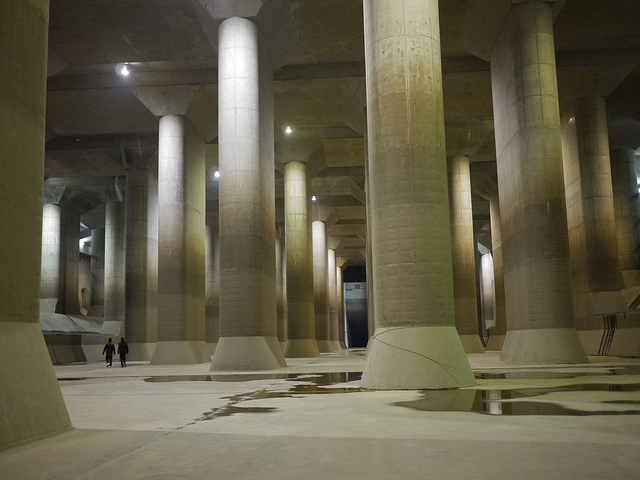
The Metropolitan Area Outer Underground Discharge Channel
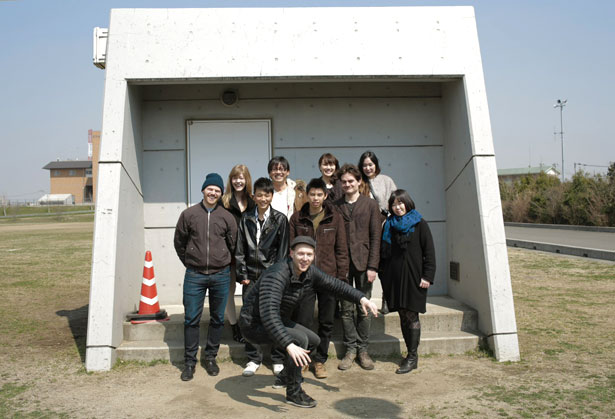
After shooting "Mizukiri(2014)" at The Metropolitan Area Outer Underground Discharge Channel
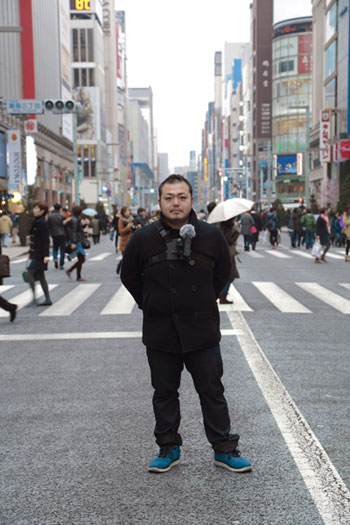
Japanese artist Kentaro Mori
At the end of our residency, we visited Naoshima Island which is "a must see" place for everyone who is interested in art, architecture and Japanese culture. We were impressed by the architecture of Tadao Ando, who we were also lucky to meet. A smaller island, Momoshima in Hiroshima prefecture, made a big impression on us and I was also fortunate to visit Art Base, established by artist Yukinori Yanagi. As I wrote earlier, Japan is a sponge that absorbs different cultures, and Yukinori Yanagi is an example of an artist who redefines what American culture could become for Japanese Art.
4)Outcomes from your residency
The residency in Tokyo was very inspiring. We met a lot of interesting people and I think that our image of Japan changed and started to be more clear and even more intriguing. It's difficult to say how our stay in Japan will impact upon the future development of our work. I'm starting to work on an exhibition which is based on found objects from my grandfather and I think that Japanese aesthetics could have an influence on my perception for this project.
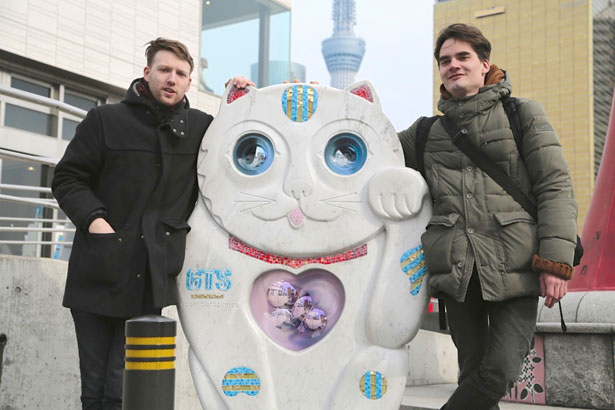
Left:Jan Szewczyk Right: Franciszek Orlowski
Back to Agency of Cultural Affairs









